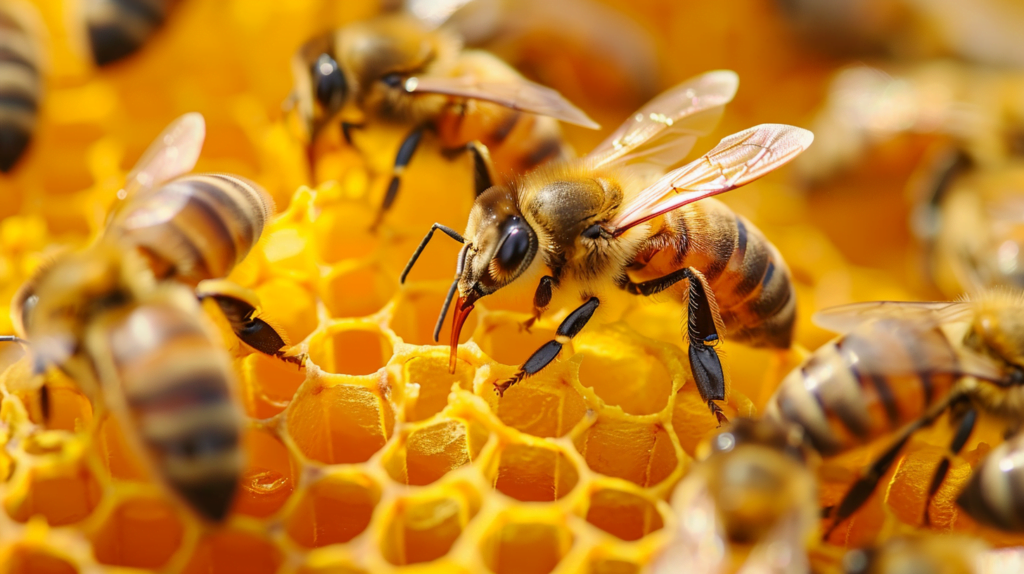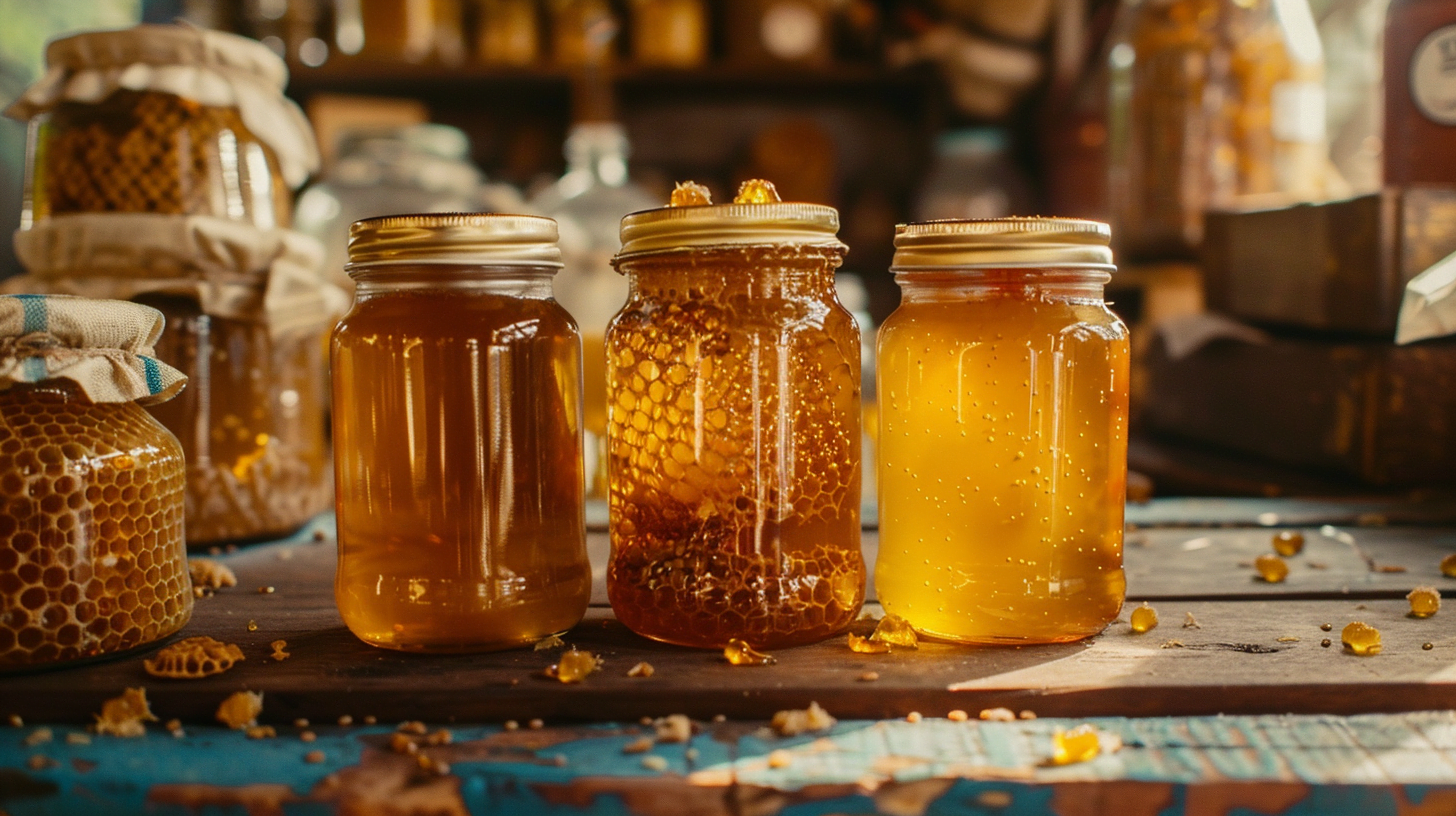The Buzz on Honey Production
Honey, that sweet, golden liquid we all know and love, is more than just a delicious treat. It’s a natural wonder, crafted by the industrious honeybees through a fascinating process. Beekeeping, the practice of cultivating and managing bee colonies, plays a crucial role in agriculture and our food systems.
Honeybees are responsible for pollinating a significant portion of the crops we consume, making them indispensable for maintaining biodiversity and ensuring food security. The honey industry also contributes to economic growth, particularly in rural areas, providing employment and income opportunities for beekeepers and related businesses.
How is Honey Produced and Harvested?
The journey of honey begins with bees collecting nectar from flowers, which they store in the honeycomb cells within their hives. Through a remarkable process of regurgitation and evaporation, the nectar is broken down and transformed into the thick, sweet substance we know as honey.
Beekeepers carefully monitor their hives and, when the time is right, they harvest the honey by removing the honeycomb frames. There are several methods used to extract the honey from the combs:
- Uncapping and Centrifugal Force: The most common method involves uncapping the honeycomb cells (removing the thin wax layer) and then using a centrifugal force extractor to spin the frames, causing the honey to be flung out of the combs.
- Crushing Combs: In some regions, traditional methods like crushing the combs are still practiced, allowing the honey to drain out naturally.
Proper harvesting and handling techniques are crucial to maintain the quality and purity of the honey. Beekeepers must take great care to prevent contamination and ensure the honey retains its natural properties.
Top Honey Producing Countries Revealed
While honeybees can be found buzzing around in many parts of the world, some countries stand out as true powerhouses when it comes to honey production. Let’s take a closer look at the top contenders:
1. China
China reigns supreme as the world’s largest producer of honey, accounting for a staggering 27% of global production in 2021 [Source: FAOSTAT]. The country’s vast landmass, diverse climate, and long-standing beekeeping traditions contribute to its dominance in the honey industry.
Major honey varieties produced in China include:
- Acacia Honey: Prized for its delicate flavor and light color.
- Rape Honey (Canola): A popular variety known for its distinct aroma and taste.
- Jujube Honey: Derived from the nectar of jujube trees, this honey is highly valued for its medicinal properties.
While China’s honey production is impressive, the industry has faced challenges such as adulteration and quality control issues, prompting efforts to improve regulations and promote sustainable beekeeping practices.
2. Turkey
Turkey is a prominent player in the global honey market, ranking second in production with over 100,000 metric tons produced annually [Source: FAOSTAT]. The country’s diverse flora, including pine forests and wildflowers, contributes to the unique flavors and varieties of Turkish honey.
One of Turkey’s most renowned honey varieties is the Pine Honey, which is highly sought after for its distinctive resinous aroma and rich taste. Beekeeping has a long-standing tradition in Turkish culture, with many rural communities relying on this practice for their livelihoods.
To support the honey industry, Turkey has implemented initiatives to promote sustainable beekeeping practices, provide training for beekeepers, and encourage the use of modern techniques while preserving traditional methods.
3. United States
The United States is the third-largest honey producer in the world, with major contributions coming from states like North Dakota, California, and Florida [Source: USDA]. The country’s diverse climate and abundant nectar sources, such as clover and orange blossoms, contribute to the variety of honey produced.
However, American beekeepers have faced significant challenges in recent years, including the phenomenon known as Colony Collapse Disorder (CCD), which has led to widespread bee population declines. To address this issue, researchers and organizations have been working tirelessly to identify the causes and implement solutions to protect and support honeybee colonies.
The U.S. government and industry stakeholders have also implemented initiatives to support the domestic honey industry, such as promoting best practices in beekeeping, funding research, and raising awareness about the importance of pollinators.
Other Notable Honey Producers
While China, Turkey, and the United States dominate the global honey production landscape, several other countries also contribute significantly to the world’s supply. These include:
- Argentina: Known for its high-quality, organic honey varieties like Eucalyptus and Clover honey.
- Mexico: A major producer of honey, with a focus on sustainable beekeeping practices and preserving traditional methods.
- Russia: With its vast landmass and diverse climate, Russia is a significant player in the honey market, producing varieties like Buckwheat and Linden honey.
Factors Influencing Honey Production
Several key factors play a role in determining a country’s success in honey production:
- Climate and Weather Conditions: Honeybees thrive in warm, temperate climates with adequate rainfall and access to nectar-rich flora. Extreme weather events, such as droughts or prolonged cold spells, can negatively impact honey production.
- Availability of Nectar Sources: The diversity and abundance of flowering plants in a region directly influence the quantity and quality of honey produced. Areas with rich biodiversity and well-managed ecosystems tend to support higher honey yields.
- Beekeeping Practices and Technology: The adoption of modern beekeeping techniques, such as hive management, disease prevention, and the use of specialized equipment, can significantly improve honey production efficiency and quality.
- Government Policies and Support: Government initiatives, including research funding, subsidies, and regulations, can play a crucial role in promoting sustainable beekeeping practices and supporting the honey industry.
The Sweet Benefits of Honey
Beyond its delectable taste, honey offers a range of benefits that make it a valuable natural resource:
Nutritional Value and Health Benefits:
- Rich in antioxidants, vitamins, and minerals
- Potential antibacterial and anti-inflammatory properties
- May help soothe coughs and improve sleep quality
Culinary Uses and Versatility:
- Versatile ingredient in cooking and baking
- Natural sweetener for beverages and desserts
- Used in marinades, dressings, and glazes
Medicinal Applications:
- Traditionally used for wound healing and burn treatment
- May have antimicrobial properties
- Potential benefits for digestive health and allergies
Economic Growth and Rural Development:
- Beekeeping provides income opportunities for rural communities
- Contributes to sustainable agriculture and food security
- Supports local economies through honey production and related industries

Challenges and Threats to the Honey Industry
Despite its many benefits, the honey industry faces several challenges and threats that must be addressed:
- Colony Collapse Disorder and Declining Bee Populations: The alarming decline in honeybee populations due to factors like pesticide exposure, habitat loss, and climate change poses a significant threat to honey production and global food security.
- Environmental Factors: Climate change, deforestation, and the use of harmful pesticides can disrupt the delicate balance of ecosystems, impacting the availability of nectar sources and the health of bee colonies.
- Adulteration and Quality Control Issues: The practice of adulterating honey with cheaper sweeteners or additives compromises its quality and purity, undermining consumer trust and the integrity of the industry.
- Sustainable Beekeeping Practices: Promoting sustainable beekeeping methods that prioritize the well-being of bee colonies, minimize environmental impact, and ensure the long-term viability of the industry is crucial.
To address these challenges, collaborative efforts from governments, researchers, beekeepers, and consumers are essential. This includes implementing stricter regulations, investing in research and education, promoting sustainable practices, and raising awareness about the importance of protecting pollinators and their habitats.
Conclusion
The world’s top honey-producing countries – China, Turkey, and the United States – have demonstrated their prowess in this sweet industry, thanks to favorable climates, rich flora, and dedicated beekeeping practices. However, the journey of honey production is not without its challenges, as the industry grapples with issues like colony collapse disorder, environmental threats, and quality control concerns.
Supporting beekeepers, promoting sustainable practices, and raising awareness about the importance of pollinators are crucial steps in ensuring a future where the sweet, golden nectar continues to grace our tables and nourish our lives. By appreciating the hard work of bees and beekeepers, and choosing quality, locally-sourced honey, we can all play a role in preserving this natural wonder.
So, the next time you savor the delightful taste of honey, remember the incredible journey it has taken, from the diligent bees collecting nectar to the dedicated beekeepers harvesting this liquid gold. Honey is more than just a sweetener – it’s a testament to the wonders of nature and the importance of protecting our precious pollinators.

